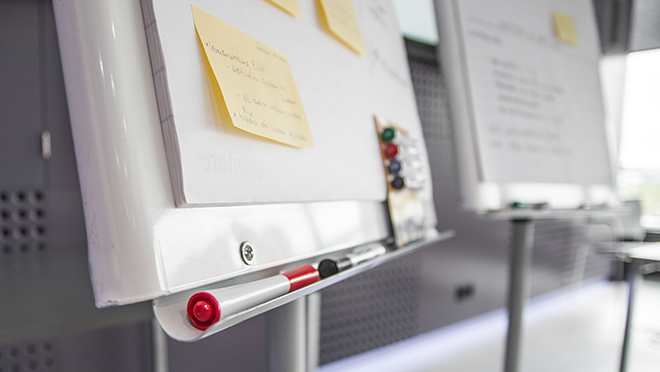The Estonian local network is led by the Energy Discovery Centre (EDC), a science centre and non-formal learning environment based in Tallinn. For the SEAS project, EDC drew a number of partners from its open schooling network to co-design an intervention in the form of extracurricular science classes (‘Science Club’) with weekly meetings throughout a school year, following a curriculum-based teaching plan with a focus on locally relevant sustainability issues.
The stakeholders and participants of the co-design process were: a representative of the local municipality, a national power company, a small business providing after-school activities, a small business producing sustainable fashion accessories, and two municipal schools represented by 2 teachers, a parent, and a school principal. The schools were recruited via an open call for collaboration. Stakeholders invited to co-design the Science Club met between January 2020 and October 2021.
Establishing common values
Co-designing locally relevant education content is by no means a simple endeavour. Co-design is a dynamic and open-ended process that requires lot of ‘translation’ between stakeholders from formal education and stakeholders from out-of-school contexts to reach a point of shared vision and understanding.
Stakeholders participating in the first co-design meeting – ChangeLab – were first invited to introduce themselves and reflect upon their personal experiences with the formal education system and sustainability issues. The EDC team elaborated on each participant’s connection with the Centre in order to build upon existing synergies and identify competencies. The EDC team introduced the SEAS project and the idea for the co-design process to create a teaching plan for a Science Club, test the teaching plan and materials in two iterations (on 2 groups of students), and assess the intervention on the basis of (1) the collaboration process and (2) students’ feedback via Local Assessment and Global Assessment Instrument procedures outlined in the SEAS project.
In order to establish shared values and goals and to identify relevant sustainability challenges, a brainstorming exercise was then organised by asking: ‘What will be the most important sustainability issues our (7th grade) students will confront in their adulthood (in 2035)?’ The exercise was based on the scenario method outlined by Dale et al (2006), designed to broaden the participants’ perspectives and challenge their existing notions (in this case: about science and sustainability education). The first phase of the method consists of three steps: (1) brainstorming visions of the future, (2) investigating trends, and (3) choosing driving forces.
The participating stakeholders named a total of 27 challenges. Participants were then asked to give 3 votes each to choose the most important issues (extinction of honeybees and other pollinators; urbanisation; shortage of drinking water). The issues deemed most important by the group were then compared to the Estonian long-term development strategy document “Estonia 2035”. The attention the group gave to the problem of pollinators was in good alignment with the emphasis put on the issue in the strategy document. On the other hand, CO2 and other greenhouse gas emissions – though important issues for the city of Tallinn, Estonia, and the planet on the whole – were not mentioned at all in the group.
Sidenote: Although emissions were not mentioned, the group did seem to worry about heatwaves and excessive rainfall caused by climate change. Also, epidemics in human societies and other animal populations was a popular issue raised in the ChangeLab. Interestingly enough, less than a month later the first COVID case was confirmed in Estonia.
Setting goals for the work ahead
The challenge chosen by the group as being most relevant – the extinction of honeybees – was then further explored. Stakeholders were asked to place the issue on an axis system (x= I know the scientific reasons – I don’t know the scientific reasons; y= I am doing something about it - I’m not doing anything about it). The majority of answers were placed in the sector of knowing about the scientific reasons and doing something about it.
As a result, the group defined the aim of the Science Club:
"to ensure students are aware of and understand the processes that cause various environmental problems and are willing to change their attitudes and behaviour in order to reduce the impact of problematic anthropogenic activity."
In addition, four thematic blocks were agreed upon for the Science Club teaching plan: Biodiversity (derived from the issue of honeybees), Climate change (added), Energy (connected to the former), and Circular Economy.
References:
Dale, L., Poortinga, J., Schwab, H. & Snoek, M. (2006). The Scenario Method for Education Facilitator Manual.
Estonia 2035. (2021). National long-term development strategy. https://valitsus.ee/media/4269/download
Recognition of Non-formal and Informal Learning. OECD. https://www.oecd.org/education/skills-beyond-school/recognitionofnon-formalandinformallearning-home.htm








